40 Celebrity-Inspired Knotless Braid Ideas for Your Next Protective Style
Where hair health meets versatility.

- Jumbo Knotless Braids
- Shaved Side Knotless Braids
- Half-Up, Half-Down Knotless Braids
- Knotless Knee-Length Braids
- Top Knot Knotless Braids
- Fiery Red Knotless Braids
- Knotless Micro Braids
- Knotless Goddess Braids
- Knotless Braid Bun
- Knotless Braids with Highlights
- Lived In Knotless Braids
- Whimsical Knotless Braids
- Waist-Length Knotless Braids
- Knotless High Ponytail
- Knotless Cornrows
- Dual-toned Jumbo Knotless Braids
- Blonde Knotless Braids
- Jumbo Knotless Braids With Curly Ends
- Knotless Braids With Beads
- Baby Hair x Knotless Braids
- Braided Pigtails
- Deep Side Part Knotless Braids
- Multi-Size Knotless Braids
- Blonde Wavy Knotless Braids
- Partially Undone Knotless Braids
- Shoulder Length Cornrows
- Blonde Bun
- Braided Bob
- Braided Crown
- Knotless Long Bob
- Knee-Length Embellished Braids
- Knotless Ponytail
- Wavy Mini Knotless Braids
- Seashell Accessories
- Knotless Double French Braid
- Knotless Updos
- Beachy Waves
- Partially Braided
- Thigh-Length Braids
- Side Swept Updo
- Why Trust Marie Claire
- Meet the Experts
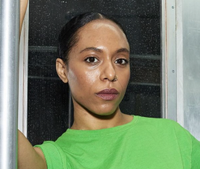
While braided hairstyles, like goddess braids and box braids, soar in popularity over the summer, they're actually the perfect style for any time of the year—including winter hairstyles. While they might take hours in a salon chair to complete (thank you hairstylists), they can last for several weeks. Knotless braids are an especially great protective style because they create less tension on the scalp and can, therefore, cause less damage or breakage.
"Knotless braids are a stylish and innovative type of braid that is created without the traditional knot at the base and are typically done using natural hair or extensions, which can vary in length, size, and style," says Kim Kimble, celebrity hairstylist and creator of Kim Kimble Hair Collection by HairUWear. But knotless braids offer more than just function; they're a way to express your creative streak by experimenting with a new hair color, length or even cut.
"Knotless braids aren’t just a hairstyle, they’re a cultural statement and a celebration of creativity," says Maya Smith, hair expert and co-founder of The Doux. "They’re one of the most versatile and empowering protective styles out there."
Whether you're keeping it simple or want to express creativity (think: knee-length knotless braids or half-up half-down knotless braids), celebs like Rihanna, Tia Mowry, and Ciara can supply endless inspiration. Here, I've found the ultimate 40 knotless braid ideas for you to indulge in or take to your next salon appointment.
Jumbo Knotless Braids
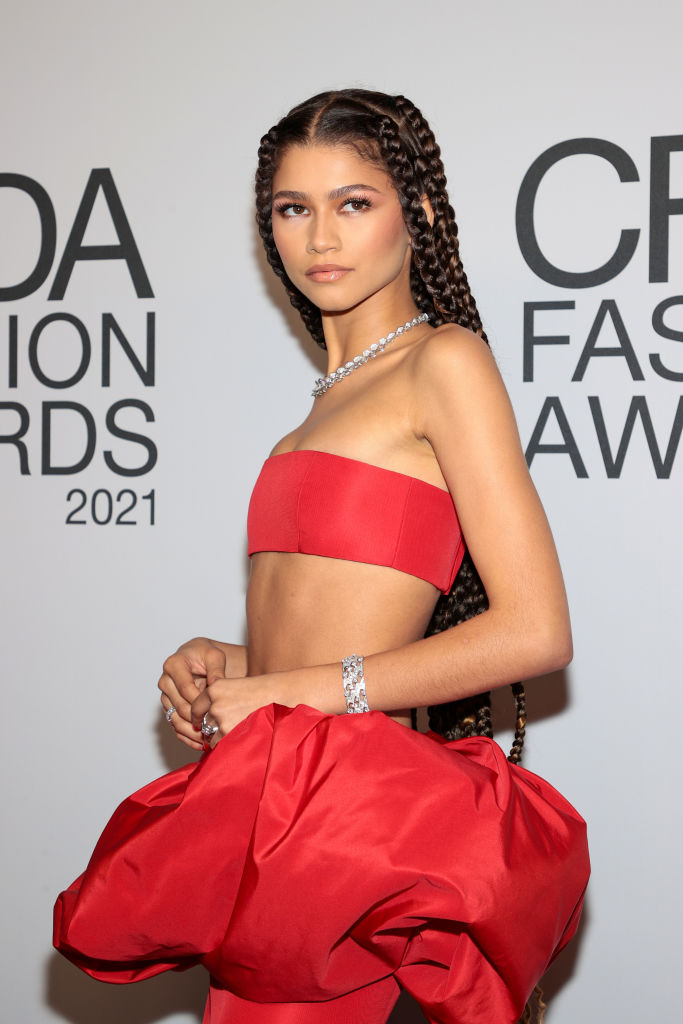
Zendaya attends the 2021 CFDA Fashion Awards at The Grill Room on November 10, 2021 in New York City.
Jumbo knotless braids are always in style and can feel casual or fancy enough for the red carpet. Look to Zendaya for proof. "One crucial tip is that your hair should not be too straight when you get this hairstyle done," says Kimble. "This doesn’t mean someone with naturally straight hair can’t get knotless braids, but when you blow-dry it out, make sure it’s not overly straight. A slight texture helps the braids hold better and stay secure."
Shaved Side Knotless Braids

Actress Keke Palmer attends the Essence 9th annual Black Women In Hollywood event at the Beverly Wilshire Four Seasons Hotel on February 25, 2016 in Beverly Hills, California.
Knotless braids even work well with an edgier vibe. Keke Palmer's gorgeous braids expertly complement her shaved head to add the perfect balance to her style.
Half-Up, Half-Down Knotless Braids
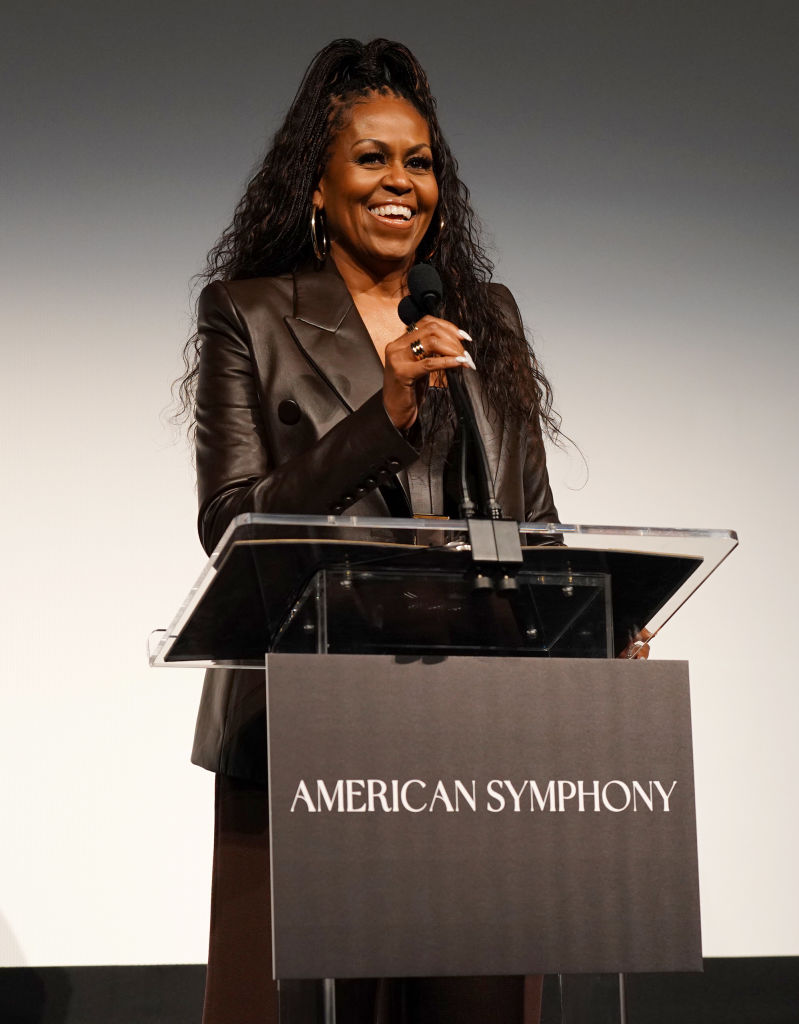
Michelle Obama attends the American Symphony New Orleans Premiere on December 07, 2023 in New Orleans, Louisiana.
Half-up, half-down styles never fail to exude a youthful vibe. Former first lady Michelle Obama's tiny knotless braids give her the ultimate low-maintenance look. "For a more relaxed yet stylish approach, a half-up, half-down style offers versatility and ease," says Smith.
Get exclusive access to fashion and beauty trends, hot-off-the-press celebrity news, and more.
Knotless Knee-Length Braids
A post shared by LACY REDWAY 👸🏾 🧠 💇🏽♀️✨♍️🗣💋💪🏾 (@lacyredway)
A photo posted by on
Tessa Thompson's sleek jumbo braids are undoubtedly stunning, but prep for this style is crucial. Kimble explains, "Before getting knotless braids, it’s important to prepare your hair and ensure it’s in the right condition for the style. Your hair should not be too short or thin for the best results."
Top Knot Knotless Braids
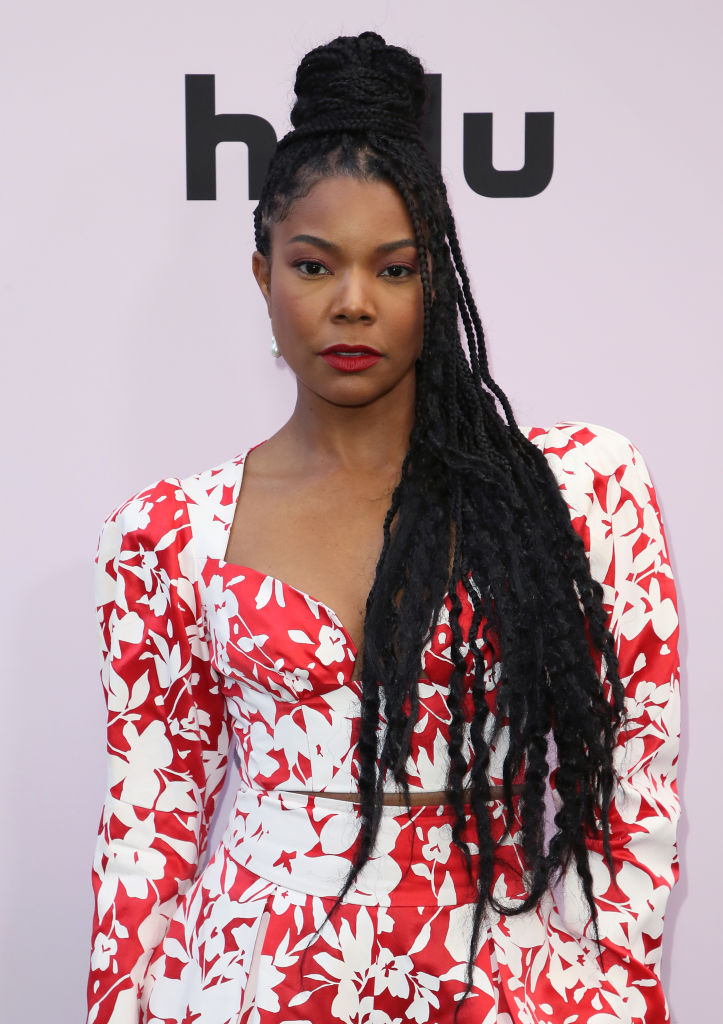
Gabrielle Union attends the 13th Annual Essence Black Women In Hollywood Awards Luncheon at the Beverly Wilshire Four Seasons Hotel on February 06, 2020 in Beverly Hills, California
Wearing the hair half-up in a bun is a fun way to change up braids, especially for anyone who gets tired of rocking the same look day in and day out. Should your scalp start to itch, Smith recommends using The Doux GET HONEY Scalp Serum to moisturize and soothe your scalp.
Fiery Red Knotless Braids

Rihanna wears a hot pink dress when arriving at a Fenty event on June 18, 2019 in New York City.
Rihanna is no stranger to experimenting with her style and beauty choices. Take a page from her beauty book by adding a pop of color with the hair. It's a fun, non-permanent way to experiment without bleach.
Knotless Micro Braids

Solange Knowles is seen during Milan Fashion Week Womenswear Spring/Summer 2023 on September 24, 2022 in Milan, Italy.
On the opposite end of the spectrum from jumbo knotless braids lies micro knotless braids, which offer a lot of versatility due to their size. While micro knotless braids are fine to keep in for a while, proper care will help them look their best. "At night, wrap your braids with a silk or satin scarf or braid bonnet before sleeping to prevent breakage and reduce frizz," says Kimble. "You can also use a silk pillowcase to help keep this hairstyle nice."
Knotless Goddess Braids
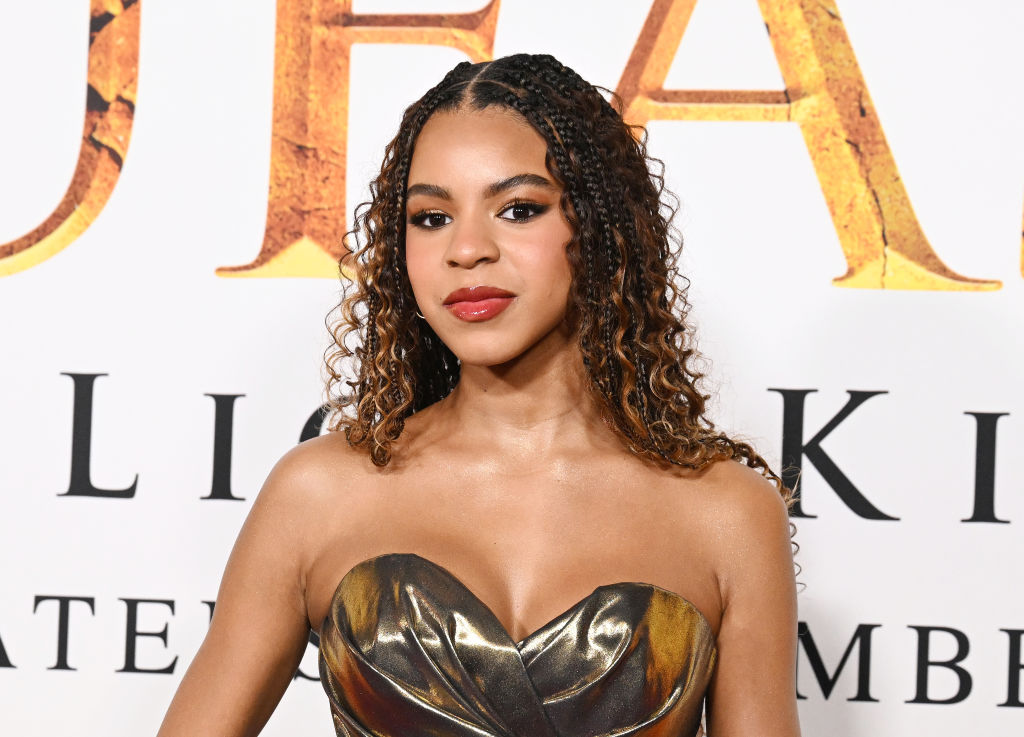
Blue Ivy Carter at the "Mufasa: The Lion King" premiere at Dolby Theatre on December 09, 2024 in Los Angeles, California.
Goddess braids are the bonafide braids once the temperatures start to heat up, but we love that Blue Ivy rocks this look regardless of the season. Her knotless goddess braids peppered in with highlights add a lot of dimension to this style.
Knotless Braid Bun
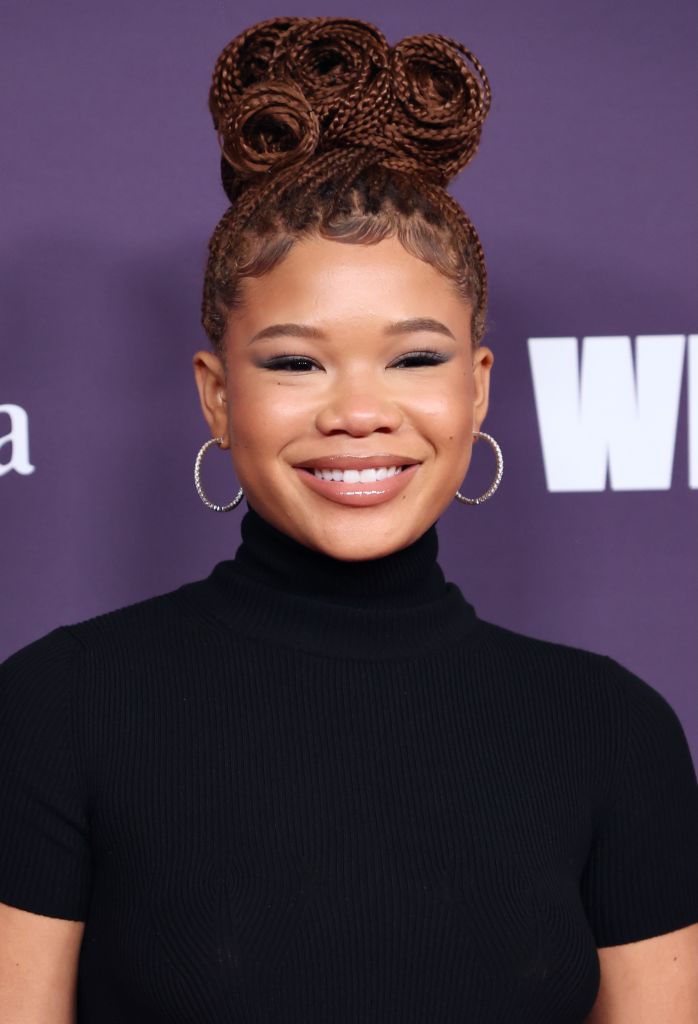
Storm Reid attends the 2024 Women In Film Annual Gala at The Beverly Hilton on October 24, 2024 in Beverly Hills, California.
Knotless braids, especially when they're in a smaller size, can easily be manipulated into other styles. Just look at this elegant braided bun on Storm Reid.
Knotless Braids with Highlights
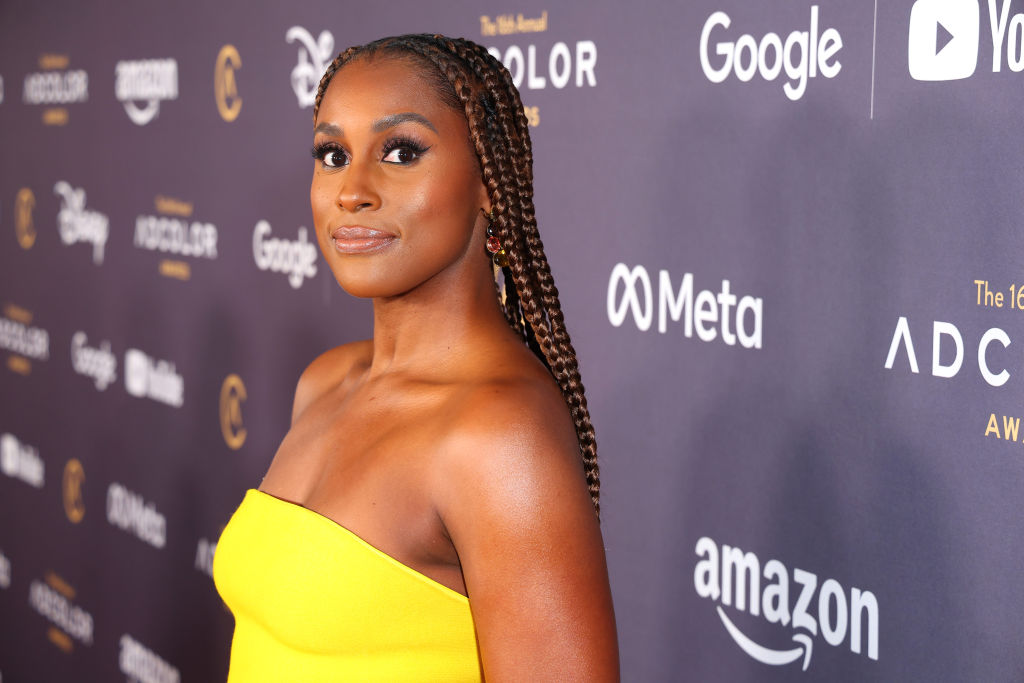
Issa Rae attends the 16th Annual ADCOLOR Awards at JW Marriott Los Angeles L.A. LIVE on November 20, 2022 in Los Angeles, California.
A classic look will never go out of style, and Issa Rae proves this with her medium-sized knotless braids worn naturally down her back. Sometimes, a touch of highlights is all that's needed to make a classic style pop.
Lived In Knotless Braids
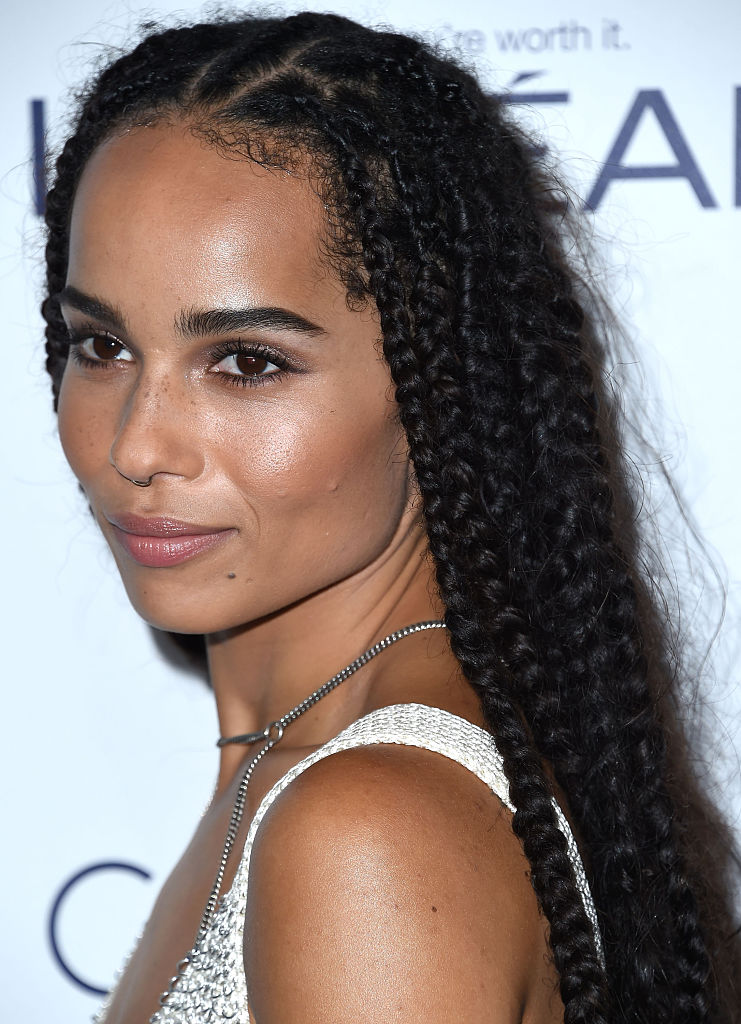
Zoe Kravitz arrives at the 22nd Annual ELLE Women In Hollywood Awards at Four Seasons Hotel Los Angeles at Beverly Hills on October 19, 2015 in Los Angeles, California.
You might spend a lot of time fighting frizz or taming flyaways, but let Zoë Kravitz prove that you don't have to. This is also a plus for the girls who forget to sleep with their silk bonnet on.
Whimsical Knotless Braids
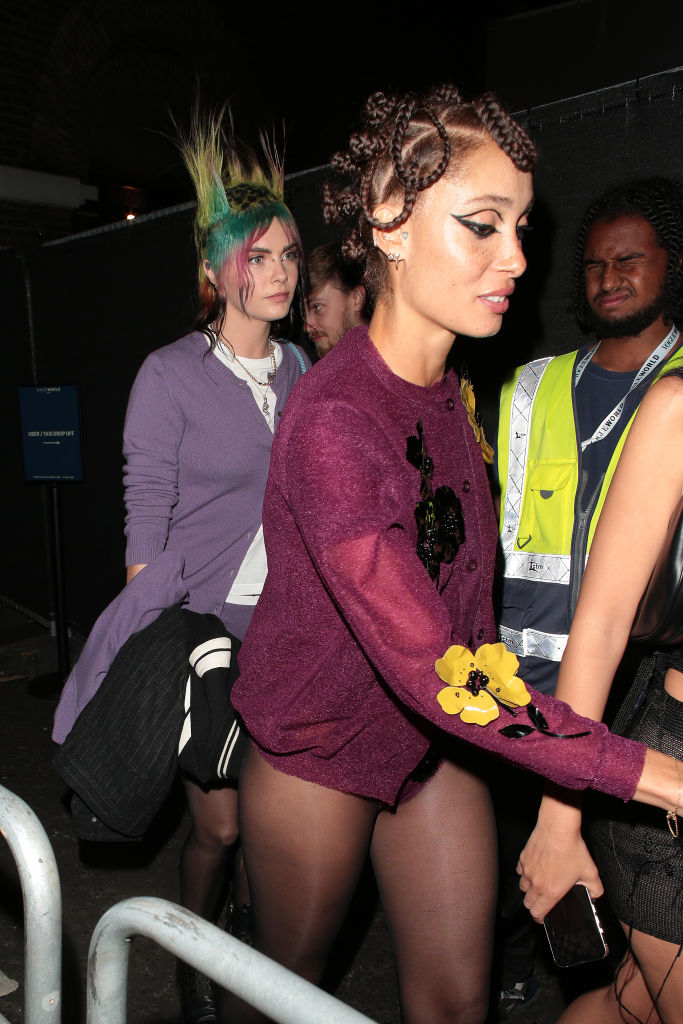
Cara Delevingne and Adwoa Aboah seen leaving Vogue World: London 2023 at the Theatre Royal Drury Lane on September 14, 2023 in London, England.
Adwoa Aboah's twist on knotless braids epitomizes a good time. The giant loops that she's styled them in are whimsical and carefree, but still maintain a chic, fashion-forward aura.
Waist-Length Knotless Braids
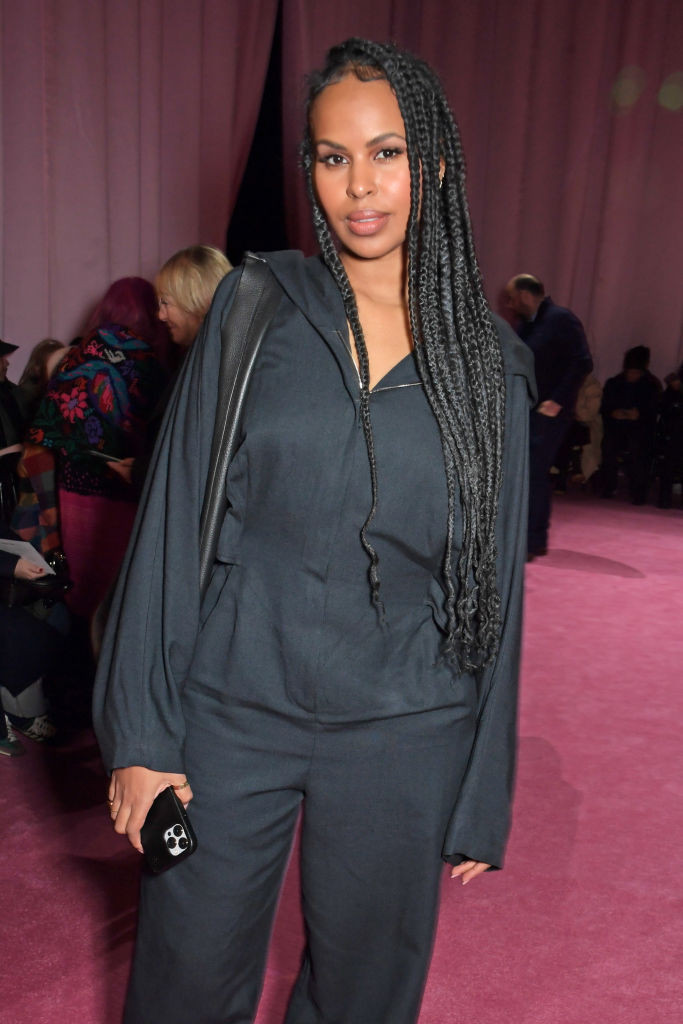
Sabrina Elba attends the Richard Quinn AW22 show during London Fashion Week February 2022 on February 19, 2022 in London, England.
Braids are an opportunity to reach your length goals, even if it's just for a few weeks. Going waist-length like Sabrina Elba might take some time in the salon chair, but it is worth the wait.
Knotless High Ponytail

Jourdan Dunn wears a black pleated shoulder-off / cut-out / corset body from Jean-Paul Gaultier, outside Jean-Paul Gaultier, during Paris Fashion Week - Haute Couture Fall Winter 2022 2023, on July 06, 2022 in Paris, France.
A sleek high ponytail is one of the ways that Smith loves styling knotless braids. Jourdan Dunn proves why: it's a sophisticated take on braids.
Knotless Cornrows
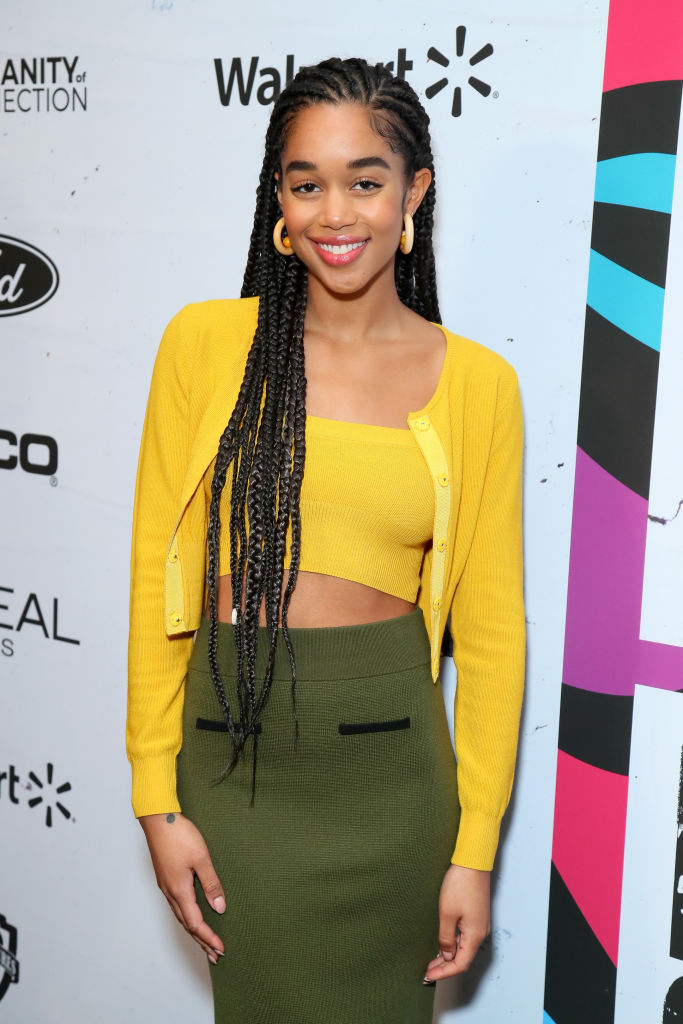
Laura Harrier attends the 2019 Essence Black Women in Hollywood Awards Luncheon at Regent Beverly Wilshire Hotel on February 21, 2019 in Los Angeles, California.
Mixing and matching braid styles isn't unheard of. Laura Harrier's waist-length braids start off as cornrows that end in the middle of her head before cascading down into knotless braids.
Dual-toned Jumbo Knotless Braids

Whitney Peak attends the "Annees Palace" - 20th "Diner De La Mode" as part of Paris Fashion Week at Pavillon Cambon Capucines on July 06, 2023 in Paris, France. (
For some, grown-out roots are a major beauty no-no, but the duality of a high-contrast look can also be incredibly cool. Whitney Peaks's knotless braids that show off a different hair color than her natural one are a masterclass in juxtaposition.
Blonde Knotless Braids

Teyana Taylor attends 'Diesel x Boiler Room: Another Basel Event' during Art Basel at 1306 Miami on December 06, 2018 in Miami, Florida.
Hairstylists are calling icy blonde one of the trending hair colors for winter. Avoid the upkeep of a dye job by getting blonde knotless braids.
Jumbo Knotless Braids With Curly Ends
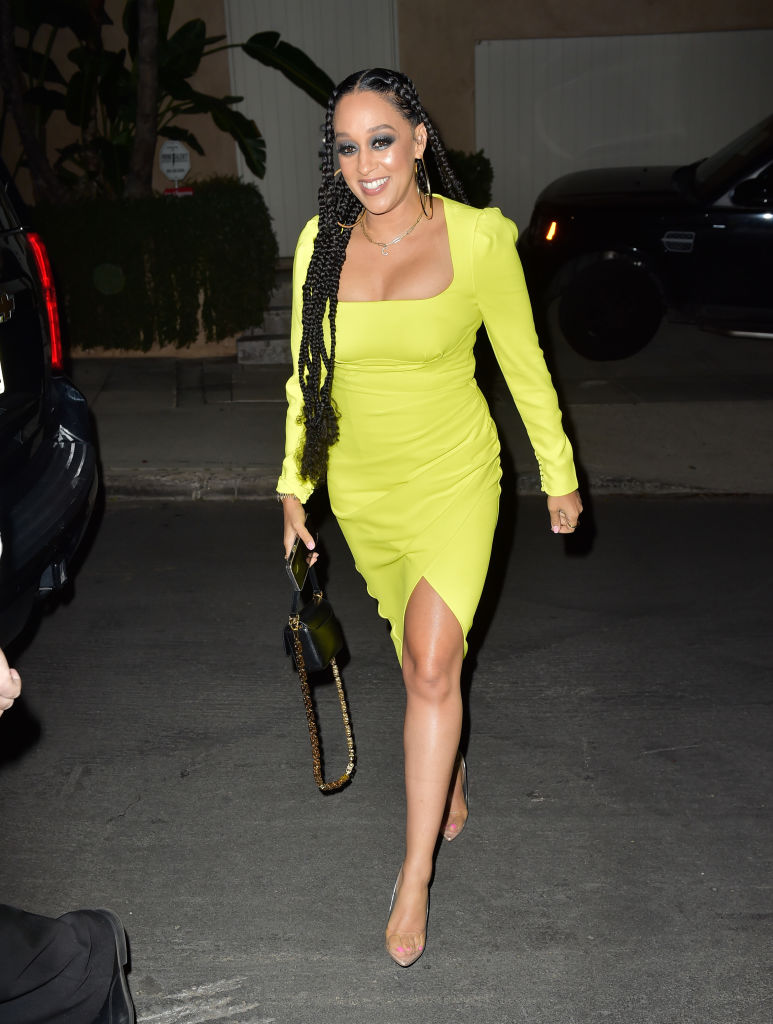
Tia Mowry is seen on February 03, 2023 in Los Angeles, California.
"Boho-inspired braids with curly ends are another standout option," says Smith, referring to some of her favorite ways to style knotless braids. Screenshot this picture of Tia Mowry and bring it to your stylist if you want to give it a go.
Knotless Braids With Beads
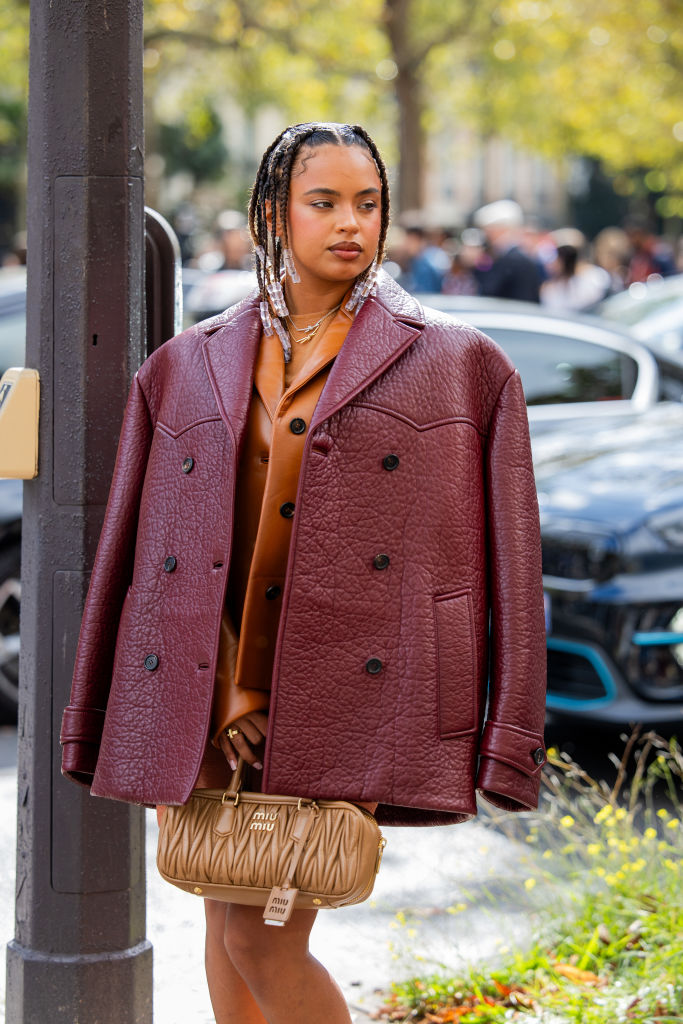
Paola Lacatelli wears burgundy jacket, brown bag, skirt, jacket outside Miu Miu during the Womenswear Spring/Summer 2024 as part of Paris Fashion Week on October 03, 2023 in Paris, France.
"Knotless braids are the perfect marriage of beauty and practicality," says Smith. "They protect the hair while offering so much styling flexibility. They’re lightweight, comfortable, and allow women to express themselves while keeping their hair healthy." If you're searching for a way to add a personal touch to your knotless look, consider sourcing some fun beads a lá Paola Lacatelli.
Baby Hair x Knotless Braids

Coi Leray is seen outside Hardware Ldn during New York Fashion Week on February 12, 2022 in New York City.
Going in on your baby hair is such an easy way to add a little something extra to any style—especially a braided look. It's effortless and can often be a statement-making piece.
Braided Pigtails
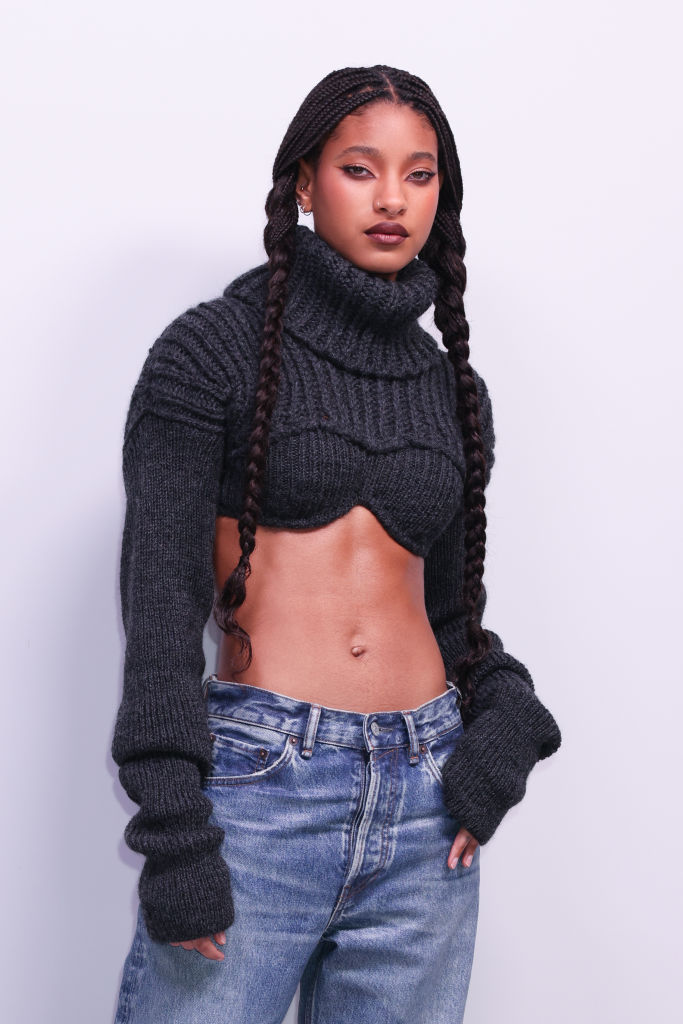
Willow Smith attends the Acne Studios Womenswear Fall/Winter 2024-2025 show as part of Paris Fashion Week on February 28, 2024 in Paris, France.
What Kimble loves most about knotless braids is how low-key they can be. "This is an easy-maintenance hairstyle, you don't have to worry about doing your hair each morning," she explains. “Your hair is done, easy breezy." Throw your knotless braids into pigtail braids like Willow Smith if you're looking for a little extra styling.
Deep Side Part Knotless Braids

Gabrielle Union attends the Out100 Celebration at NeueHouse Hollywood on December 11, 2024 in Hollywood, California.
One of the pros to opting for knotless braids is that they blend really well into your natural hair. Kimble says, "These braids have a seamless, natural look because they blend smoothly with your hair. The absence of a visible knot creates a more natural transition."
Multi-Size Knotless Braids
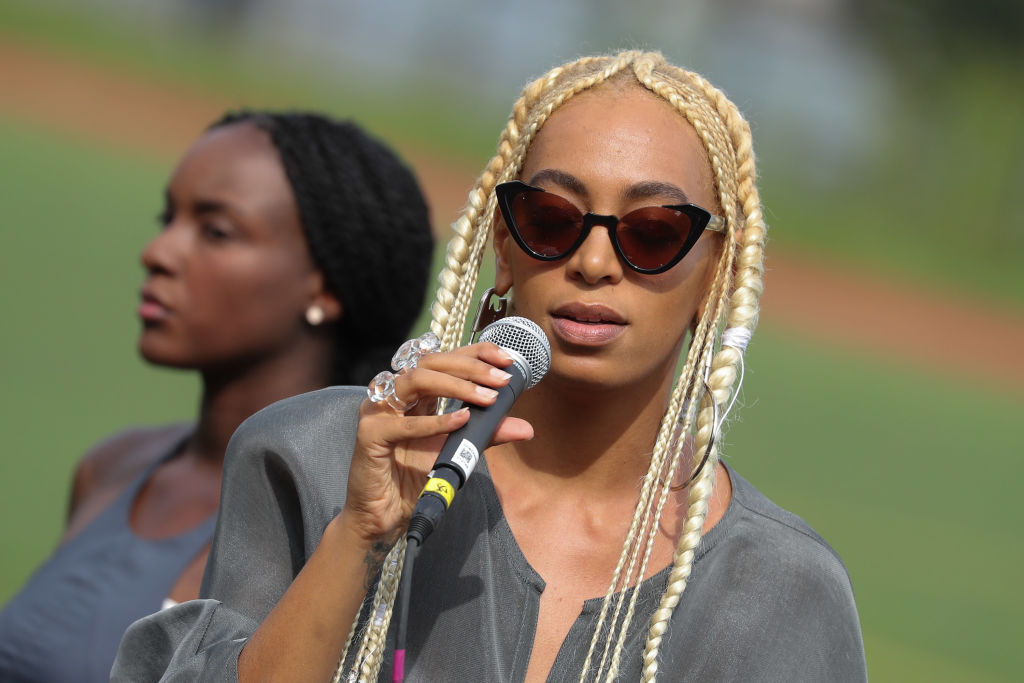
Solange Knowles sings at the Maryam Nassir Zadeh Collection during New York Fashion Week at the East River Track on September 12, 2017 in New York City.
Why settle on a braid size like micro or jumbo when you have have both like Solange. Her intricate braids coupled with bleach blonde color are visually stunning.
Blonde Wavy Knotless Braids

Marsai Martin attends the PrettyLittleThing X Marsai Martin event on July 09, 2024 in Beverly Hills, California.
If you don't want to commit to a full head of blonde braids adding a few is always an option. The addition of blonde strands, especially in this gradient manner like Marsai Martin, is perfect for summertime or any tropical escape.
Partially Undone Knotless Braids

Tinashe at the 2024 MTV Video Music Awards held at UBS Arena on September 11, 2024 in Elmont, New York.
Braids offer so much versatility and freedom of expression. Tinashe proves just that, embracing a new hair color, micro braids, and a wavy texture all in one look.
Shoulder Length Cornrows
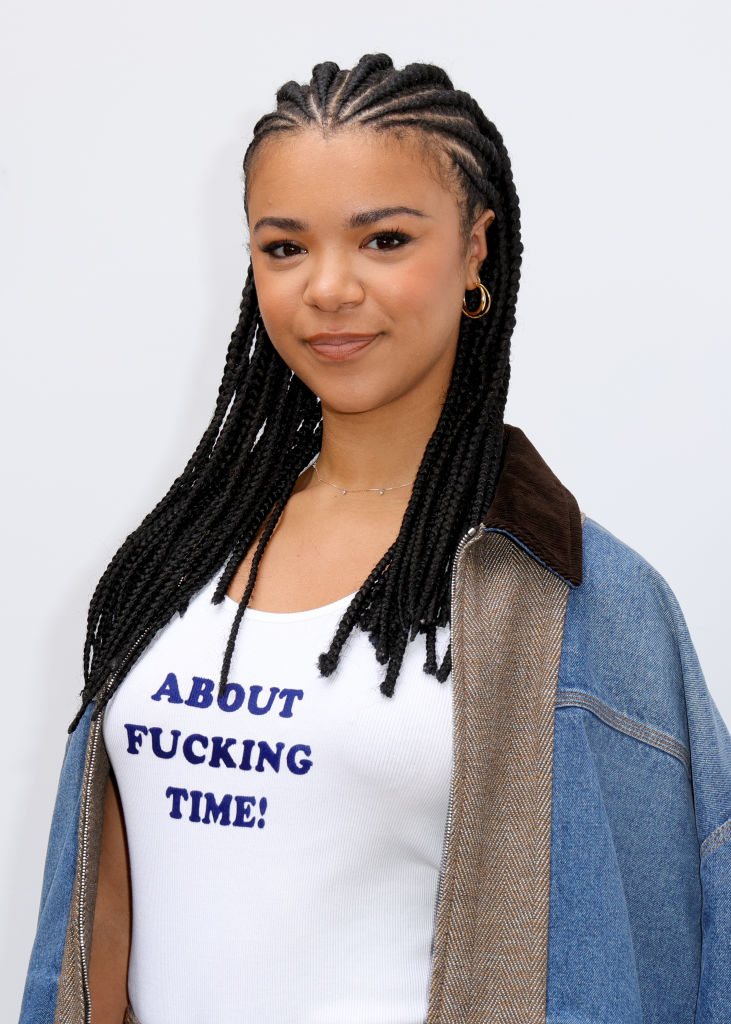
India Ria Amarteifio at Stella McCartney RTW Spring 2025 as part of Paris Ready to Wear Fashion Week on September 30, 2024 in Paris, France.
Not everyone is going to be able to pull off this style like India Ria Amarteifio, and that's ok. But if your natural hair is on the longer side and thick or coarse, these medium-sized knotless braids are a solid option. "Before getting knotless braids, it’s important to prepare your hair and ensure it’s in the right condition for the style," explains Kimble."Your hair should not be too short or thin for the best results."
Blonde Bun

Zoe Kravitz attends Yves Saint Laurent Beauty Party as part of the Paris Fashion Week Womenswear Fall/Winter 2017/2018 at Carre Des Sangliers on March 1, 2017 in Paris, France.
"Sleek high ponytails or buns are excellent options for achieving a polished and sophisticated look," says Smith. Kravitz adds an additional twist with her platinum blonde hair.
Braided Bob
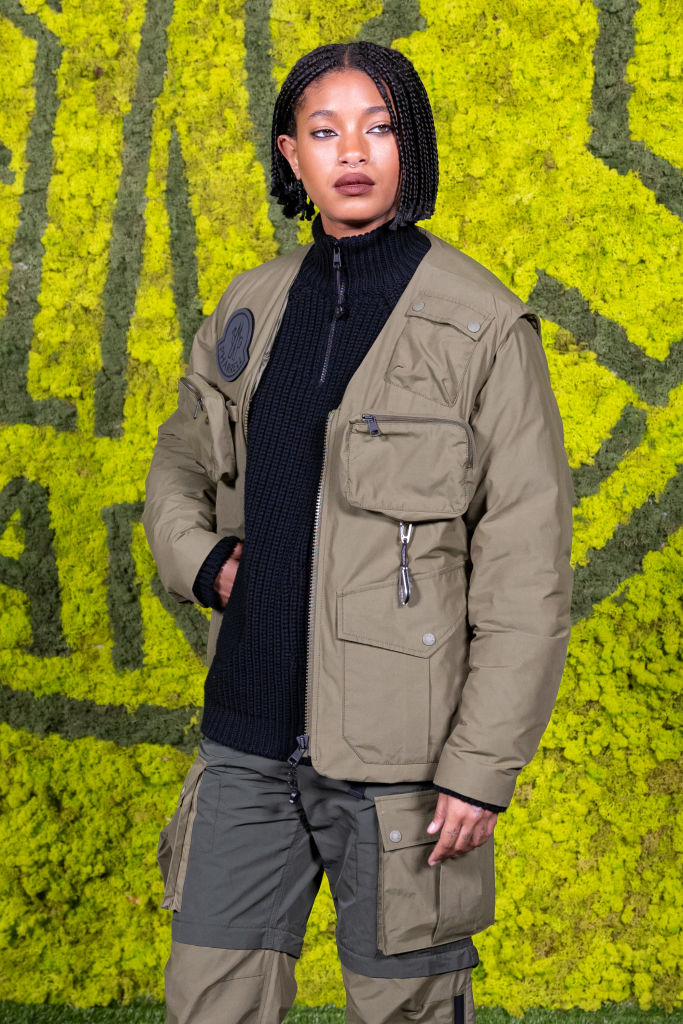
Willow Smith arrives at the Moncler event during the Milan Fashion Week Womenswear Spring/Summer 2024 on September 20, 2023 in Milan, Italy. (
A braided bob is the perfect low-maintenance way to style knotless braids. It won't add as much tension to the hairline as longer braids, and it's perfect for hot weather since the hair is off your neck and back.
Braided Crown

Yvonne Orji attends 2019 Essence Black Women In Hollywood Awards at the Beverly Wilshire Four Seasons Hotel on February 21, 2019 in Beverly Hills, California.
Queen is the only label for Yvonne Orji's hairstyle. This gorgeous braided crown is a unique way to play with a knotless braided style and definitely gives off Rapunzel vibes.
Knotless Long Bob

Amandla Stenberg is seen out and about on February 22, 2024 in Milan, Italy.
If you want to get a long bob like Amandla Stenberg you have to start off with the right foundation. "Start by thoroughly washing and conditioning your hair to ensure it’s clean and hydrated," says Kimble. "It’s important to let your hair stay in its natural state, avoid straightening it or using products that make it too silky, as this can make the braiding process more difficult and affect how well the braids hold."
Knee-Length Embellished Braids

Venus Williams attends The 2022 Met Gala Celebrating "In America: An Anthology of Fashion" at The Metropolitan Museum of Art on May 02, 2022 in New York City.
This knee-length, embellished style from Venus Williams is truly magical. "On the downside, they [knotless braids] take more time to install and can be pricier than traditional braids," says Smith. "However, the benefits often outweigh the drawbacks for most people."
Knotless Ponytail
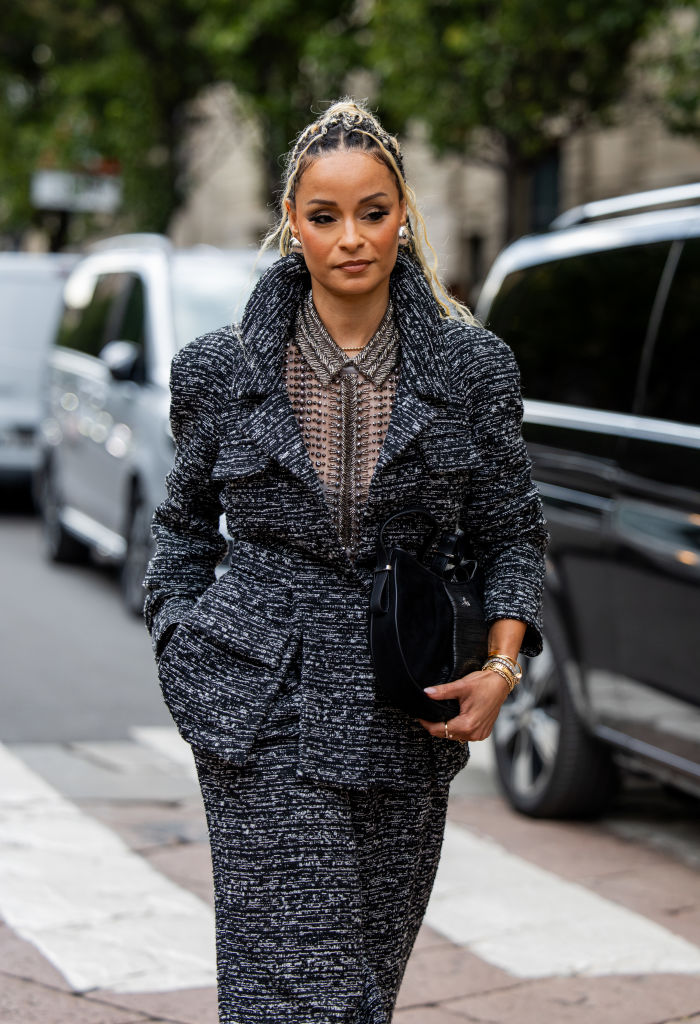
Sai De Silva wears grey jacket, pants, black bag outside Alberta Ferretti during the Milan Fashion Week Menswear Spring/Summer 2025 on September 17, 2024 in Milan, Italy.
A simple ponytail is sometimes all it takes to make your braids feel like a brand-new style. Pops of blonde, like the platinum hue seen on Sai De Silva, are also a fun addition.
Wavy Mini Knotless Braids

Tems performs onstage during Day 2 of One MusicFest at Piedmont Park on October 29, 2023 in Atlanta, Georgia.
Tems pulls out a few face-framing pieces to finish off this playful knotless braids style.
Seashell Accessories
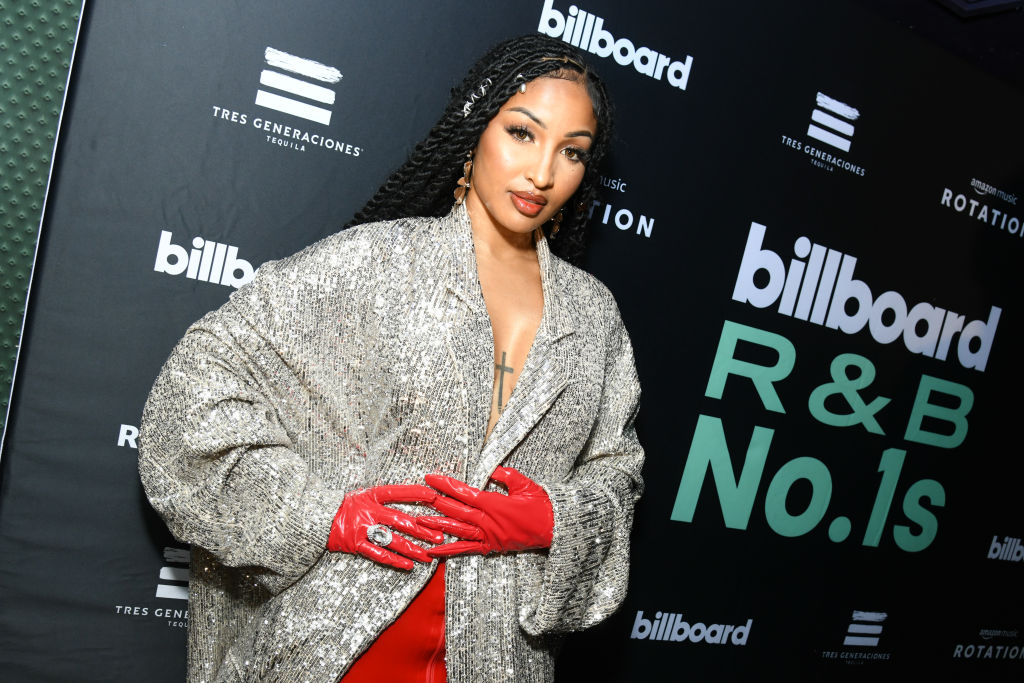
Shenseea at the Billboard R&B No. 1 held at The Box on September 8, 2024 in New York, New York.
Shenseea is channeling island energy with her embellished knotless twists. However, when the time comes to remove any braided style there are a few things to keep in mind. "Once you’ve removed the braids, start by gently detangling your hair to remove any shed strands," says Smith. "Cleanse your hair with a sulfate-free shampoo to eliminate buildup, followed by a deep conditioner to restore moisture."
Knotless Double French Braid
A post shared by justine marjan (@justinemarjan)
A photo posted by on
Keeping it simple can seem so underrated when there are so many creative ways to style hair. However, two French braids are sometimes all you need to look fabulous.
Knotless Updos
A post shared by LACY REDWAY 👸🏾 🧠 💇🏽♀️✨♍️🗣💋💪🏾 (@lacyredway)
A photo posted by on
Knotless braided updos aren't one size fits all. The sky is the limit with braids, and both these looks show what is possible. You and your stylist just have to get creative.
Beachy Waves
A post shared by LACY REDWAY 👸🏾 🧠 💇🏽♀️✨♍️🗣💋💪🏾 (@lacyredway)
A photo posted by on
Beachy waves can be for girls who love braids, too. Amanda Gorman's mermaid style is proof.
Partially Braided
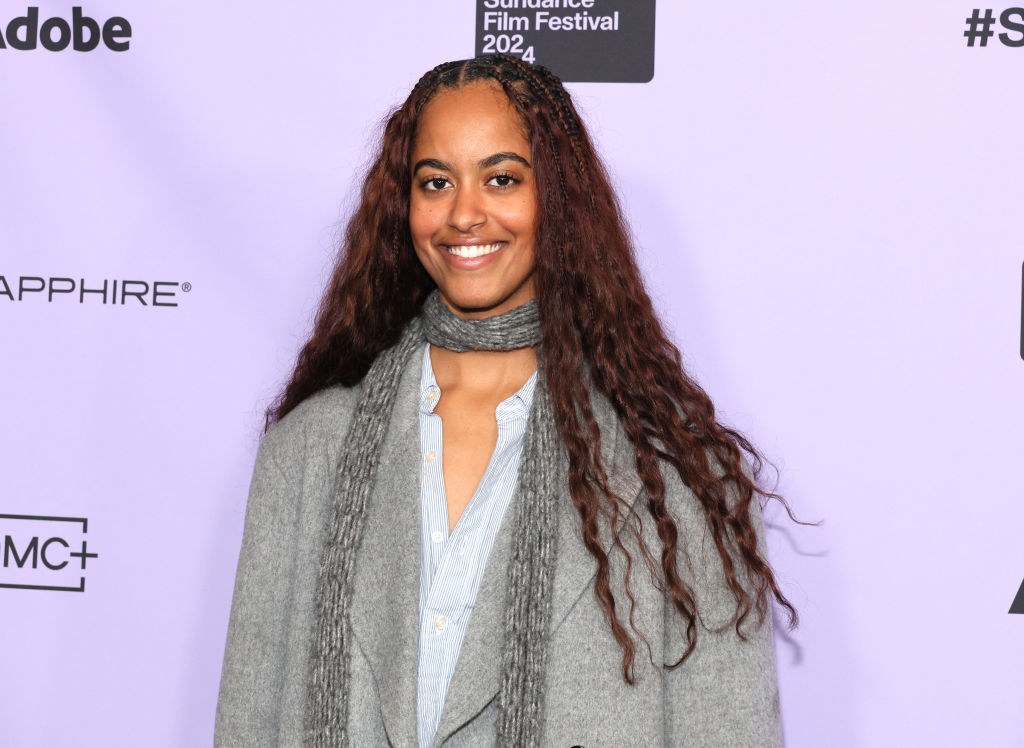
Malia Ann Obama attends the "The Heart" Premiere at the Short Film Program 1 during the 2024 Sundance Film Festival at Prospector Square Theatre on January 18, 2024 in Park City, Utah.
Malia Obama mixes a braided style with a more natural-looking hairstyle. Ultimately, a look like this offers a lot of versatility. She can wear it down (pictured above), try pigtails, a top knot, or a high pony.
Thigh-Length Braids

Tracee Ellis Ross attends the 61st Annual GRAMMY Awards at Staples Center on February 10, 2019 in Los Angeles, California.
Tracee Ellis Ross has a reputation for going big with her hairstyles; these braids are no exception. Who needs waist-length braids when you can have thigh-length ones?
Side Swept Updo
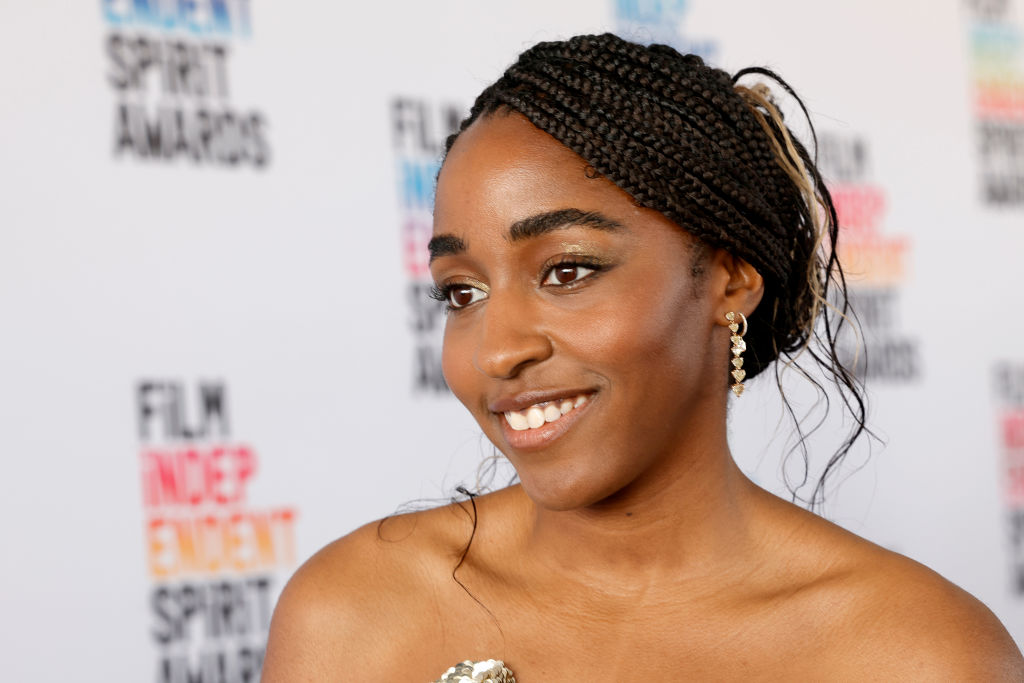
Ayo Edebiri attends the Spirit Awards.
A simple side-swept updo is an easy way to change things up when wearing braids. Hair accessories like claw clips or pins can dress up a casual style.
Why Trust Marie Claire
Jamie Wilson is a beauty editor and writer with nearly a decade of experience in the beauty industry. She has words in Harper's Bazaar, Glamour, Marie Claire, and more, focusing on print and digital features, trend stories, and shopping roundups. She spoke with two hair experts to compile this roundup of knotless braid hair inspiration.
Marie Claire is also a leading beauty expert, having produced content about various hairstyles, cuts, and colors. We're constantly scanning and reviewing new hair launches and keeping a pulse on what's trending.
Meet the Experts
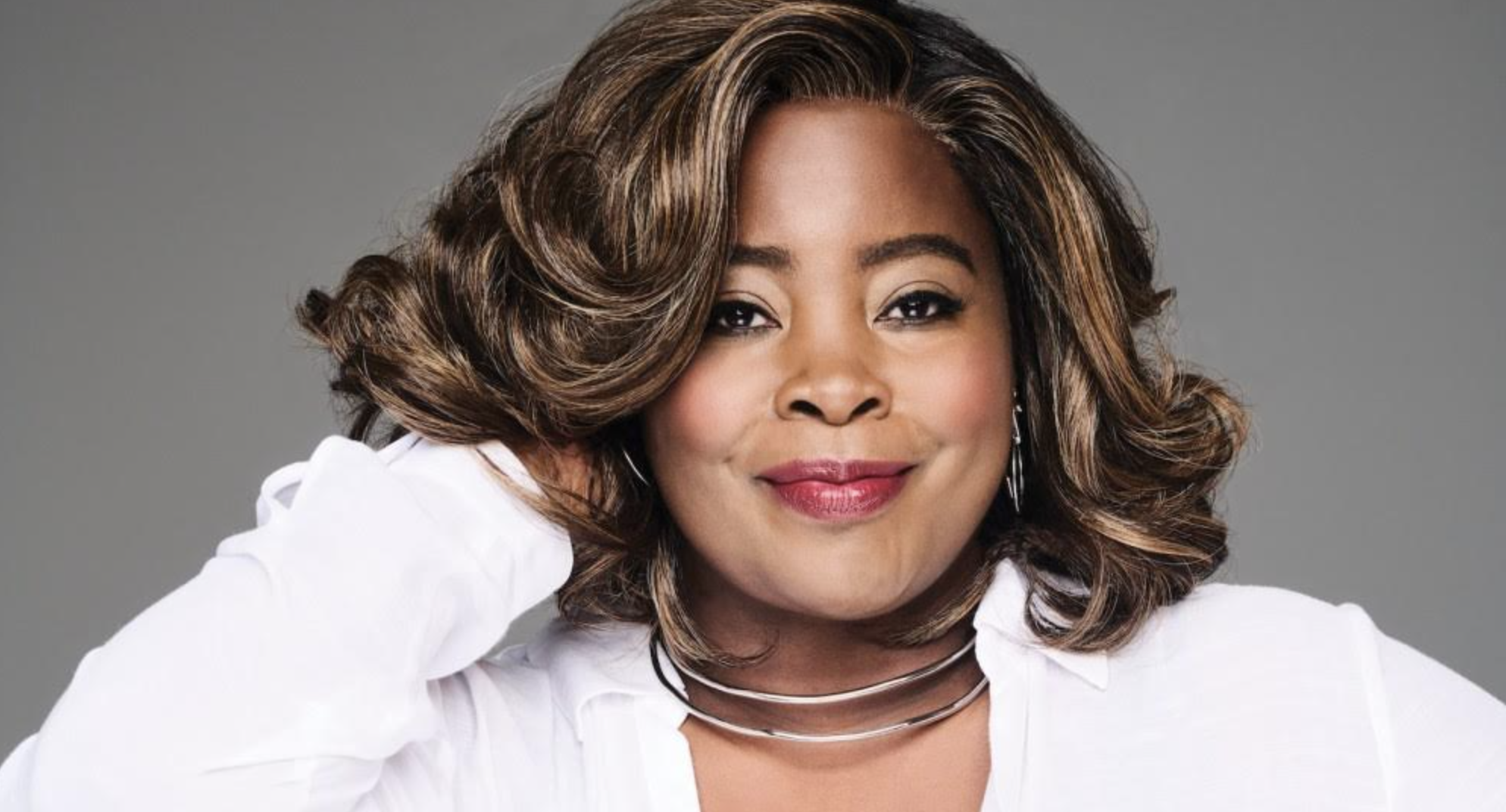
Kim’s mother and grandmother were both stylists. While learning the business from them, Kim created her own techniques, which she showcased at her first salon Phaze II, in Los Angeles in 1995. Kim’s celebrity hairstyling career took off when she was hired as Key Hairstylist on the movie “B.A.P.S” starring Halle Berry.
The elaborate hairpieces that she designed for the film caught the attention of other Hollywood executives and talent, which led to her working on TV shows like Cinderella and Moesha starring Brandy. Later, Kim worked on The Jamie Foxx Show, Two Can Play That Game and Austin Powers: Goldmember. During the filming of Austin Powers she worked with Beyonce, which made Kim Kimble a household name in the hair world. Since then, Kim has worked on productions including Think Like A Man, Sparkle, Dreamgirls, Obsessed, and Deliver Us From Eva.
When Kim Kimble is not working on her multiple businesses, she can be found hair-styling for celebrities like Gabrielle Union, Vanessa Williams, the Williams sisters, Kerry Washington, Sanaa Lathan, Garcelle Beauvais, Tarji P. Henson and Zendaya.
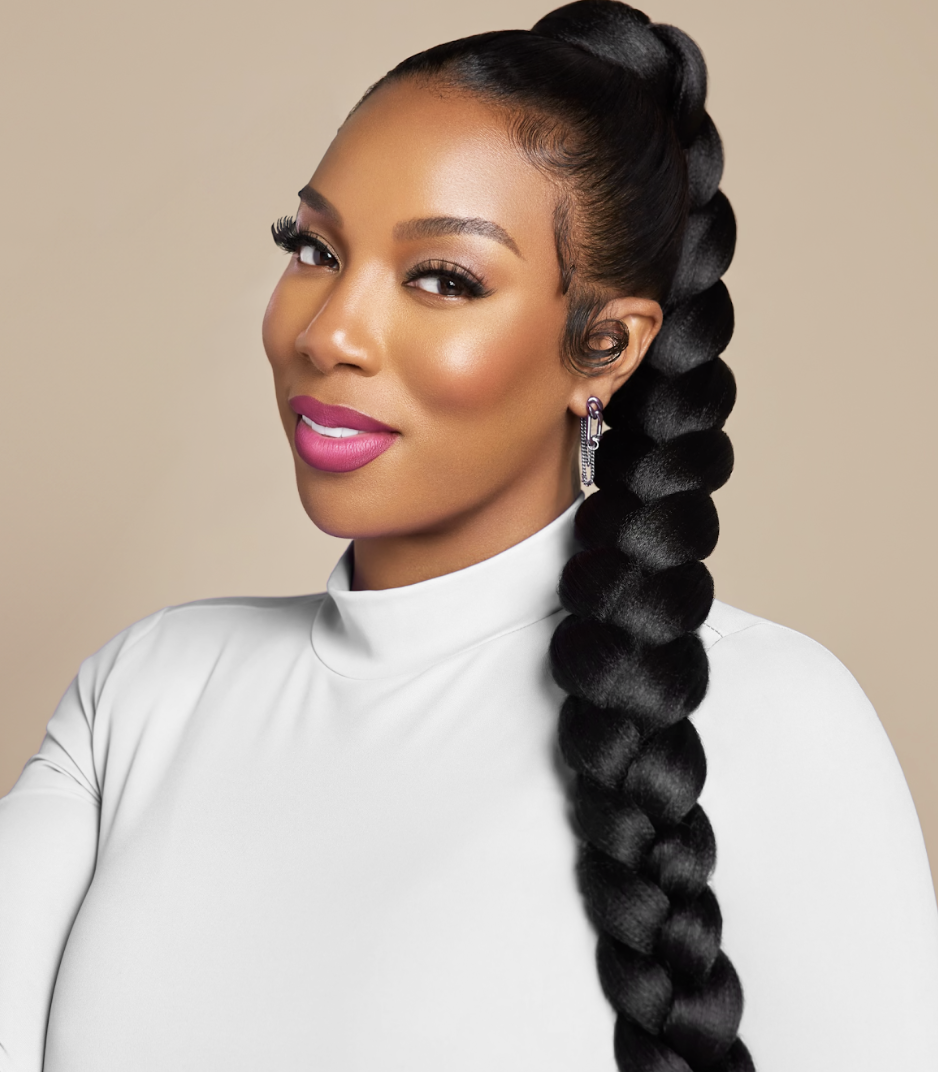
Donning multiple crowns, from the CEO and Co-Founder of the award-winning brand The Doux to a wife and devoted mother, Maya's journey spans nearly three decades in cosmetology.
Recognized as a global curl savant and crowned “Top 15 Curl Expert" by Naturally Curly, her digital realm is electrified with style. Think braids, hair adornments, and a certain magic that's caught the eyes of icons like Erykah Badu. During a spell in Germany in 2008, alongside her military-deployed husband, Maya envisioned a space that cherished textured hair. A salon that became the bedrock of inspiration for her transformative line.
Maya worked extensively with top chemists for two years to birth The Doux: a tribute to salon-grade haircare and a nod to 90’s Hip Hop's rhythm and vivacity. Just glance at the packaging –a canvas of vibrant hues and graphics, all stemming from Maya's hands, thanks to her prowess as a graphic designer.
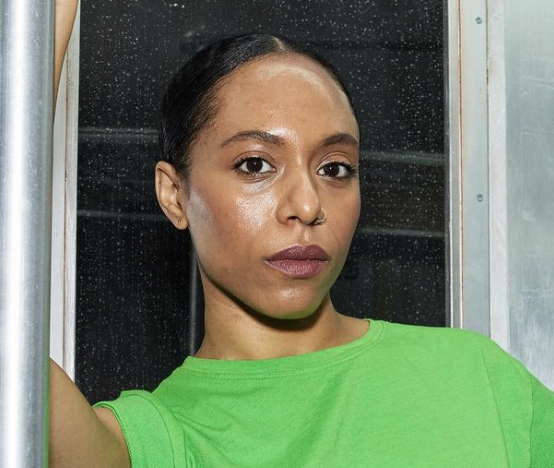
Jamie Wilson is a New York-based beauty writer and editor. In her prior role, Wilson was beauty editor at Harper’s Bazaar, writing both print and digital features, and trend stories.